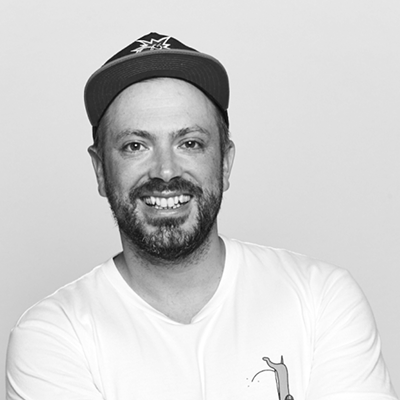The leap from local clients to premium brands isn’t about credentials alone – it’s about how you position yourself. This piece reveals how independent creatives access higher-level clients: by focusing on the client’s needs, researching properly, and balancing business language with creative identity. With advice from industry leaders Simon Lee (CCO of The Hallway) and Andy Wright (Founder of Never Not Creative, CEO of Streamtime) with insights from mental health expert Aimee Davies who’ve seen what works (and what doesn’t), you’ll find a practical roadmap for breaking into that next level.
Breaking into the upper echelons of client work as an independent creative can feel like trying to get into an exclusive club where everyone knows the secret handshake except you. After years of building your skills and portfolio, watching others land dream projects while you're still pitching to local businesses can feel like a cat chasing its own tail – lots of energy expended with little progress.
This question was answered by Simon Lee – Chief Creative Officer and joint owner of The Hallway, one of Australia’s leading independent agencies where he leads development of “Affective Ideas” that create positive impact for businesses and society; Aimee Davies – mental health educator and counsellor who supports creatives through The Hey Mate Project; and Andy Wright – Host, Founder of Never Not Creative, CEO of Streamtime, and Co-Chair of Mentally Healthy, who champions making the creative industry kinder and fairer.
Simon’s first piece of advice cuts straight to the heart: "Make your approach 100% about them, not about you." It’s obvious, but it’s where many pitches go wrong.
"I get things all the time with people telling me how great they are. I'm like, yes, but what's the relevance of that to me?" The harsh truth is that higher-level clients don’t care about your awards or your process – they care about their problems and how you can solve them.
This shift in perspective is fundamental. Lead with your understanding of their challenges and your unique ability to address them.
When Simon talks about making it about them, he means really understanding who you’re approaching. "Do your research... if you’re going to make it about them you’ve got to understand as much as you can about that brand or even that person."
This shows immediately. "The worst thing is people saying, ‘I love the work you do.’ I often ask, ‘Which piece in particular?’ and they have no clue."
Many independent creatives struggle here: they focus on the creative but neglect the business outcomes. "Remember, the people you’re approaching don’t really care about cool creative for its own sake," Simon explains.
Instead, "these clients care first and foremost about driving results for their brand." The solution is to "excite them with your unique ability to help drive those results." Learn to "speak the language of business and balance that with creative insight."
Simon adds, "It’s still surprisingly rare to find people who can balance both, so if you can do it, you’ll be in high demand."
Higher-level clients are busy people "getting heaps of cold approaches every day... but they have business challenges that need solving." This creates opportunity: they’re overwhelmed with generic pitches but desperate for real solutions.
Position yourself as someone who understands their specific challenges and has the skills to address them.
Aimee highlights the value of authenticity: "Develop both sides and deliver it in a way that’s authentic and genuinely shows interest." Higher-level clients can spot generic enthusiasm a mile away – genuine understanding stands out.
Simon clarifies: "I’m not saying you should posture as purely commercial. The exciting thing is being that unique creative person who can speak the language of business."
He points to David Droga as an example: "Brilliant creative, but he gets business. He can go in with that creative mind and still speak with CEOs and leaders of the biggest organisations."
Andy mentions "the trusted advisor" concept, referencing David Maister’s work. Getting higher-level clients isn’t just about your portfolio – it’s about becoming someone they trust to solve problems.
This takes time but creates sustainable opportunities. You become the go-to creative for clients who value your judgement.
There’s no magic shortcut – it’s about fundamentally changing your approach. Make every interaction about their needs, do genuine research, and learn to speak their language while keeping your creative edge.
Higher-level clients are busy but looking for the right people. If you develop both your business and creative sides authentically, they’ll find you much more relevant than a generic cold pitch ever could be.

CCO & co-owner of The Hallway, creating ideas with real-world impact. Led the Boys Do Cry campaign, reaching 100M+ and inspiring men to seek mental health support. Mentor, speaker & dad of two.

A mental health educator and counselor, combining years in the creative industry with nearly five years in therapy, now runs The Hey Mate Project to provide tailored support for creative professionals and organisations.

Founder of Never Not Creative, CEO of Streamtime & co-chair of Mentally Healthy, driven to make the creative industry fairer & more human. Believes great work should never cost wellbeing.



